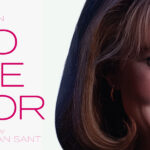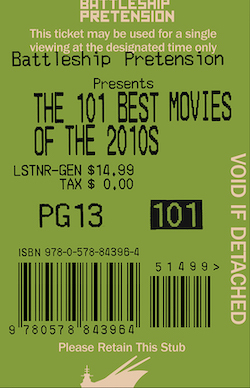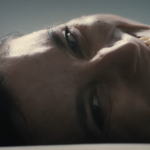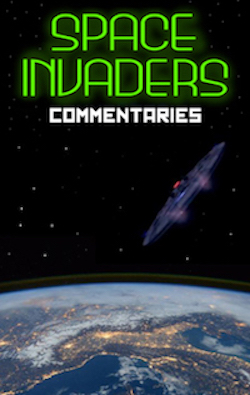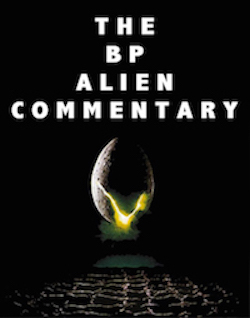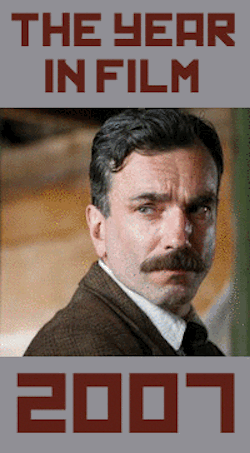Ebertfest 2015: Day Four, by Aaron Pinkston
The Saturday of Ebertfest is always the most packed day, with four screenings instead of three, so let’s cut the chit-chat.
Of the three films I had previously seen coming into Ebertfest, Wild Tales was definitely the one I was most excited to revisit. I absolutely loved when I saw it in my local arthouse theater a few weeks ago and really wanted to dive back into writer-director Damián Szifrón’s twisted world of retribution. It is my favorite film of the year so far, even though I still have a difficult time qualifying a film that was nominated for an Academy Award earlier this year could be considered a 2015 release, but that’s no fault of this fantastic film. Also, seeing the film with 1,200+ willing and eager filmgoers was sure to be an awesome experience. And it was! Throughout the festival, no other film got as much interaction from the Virginia Theatre crowd – there were literal howls at the screen at times, and each segment break was met with rousing ovation.
If you haven’t seen Wild Tales yet, here’s a short primer. The film consists of six short films, all are very bleak dark comedies that eventually have something to do with revenge. The less you know about each, the better. Each of the shorts has at least one major plot twist which leads the characters (and viewers) deeper into depravity. Despite being dramatically different directions of narrative, all of the shorts come from a clear, consistent voice. And, with the exception of one section that plays a little straighter, all have a fairly similar tone and comedic style – routinely going a step or two further than expected. The script is far from high-brow, but it is incredibly smart in finding ways to manipulate the audience’s expectations.
The quest for revenge takes many different forms against different parties: an old enemy that did you wrong long ago, corporate bureaucracy, a new spouse, even your most inner circle. One thing the film does really smartly is unbalance the rooting interests. Sometimes you might root for the character out for vengeance, sometimes the character who is getting vengeance taken upon them. And at times it is impossible to know exactly who to root for.
For me, the opening segment, which is the shortest and least complex overall, is the best running away. It is a nearly perfect way to introduce this wild world to the audience. Its reveal is completely disarming and an announcement that you should just sit back and enjoy the ride. The fifth segment, which deals with a negotiation between a police officer and a wealthy man trying to protect his son from consequences over a crime he has committed, is the most dramatic outlier. Because of that, I think many may look past it, but it is my second favorite. It’s not as zippy or insane, but it is perhaps the only time where real, unexaggerated emotional stakes are at play and I found some good tension from that. A wedding gone wrong (#6) and a man’s compulsion over a towing company (#4) are in the middle. The third segment starts out fairly weak, but goes to such extreme places, with a wonderfully twisted final shot. Finally, the second segment comes off the stellar opening with a difficult task – it’s dark and funny, but not nearly as clever as the other five pieces. That said, every segment is high quality and it somehow all comes together as more than the sum of its parts.
One of Ebertfest’s biggest goals is to bring underseen films into a community that otherwise doesn’t get many of the small indie releases. Though the festival has bloomed over the years and many people travel from around the country to attend, the heart of Ebertfest is truly in Champaign, Illinois. Despite the vibrant and large campus community, there is only one small art cinema in town, located in downtown Champaign, a few miles away from the heart of the University. Some of my best film experiences in college were seeing films at the Art Theatre – that is where I first saw The Science of Sleep, Pan’s Labyrinth and Lady Vengeance, the third film in Park Chan-wook’s “vengeance trilogy.” This year, the Art was showing Kumiko the Treasure Hunter. My point is that the community does have some access to indie films, but it is pretty exclusive and limited.
Sometimes I have to keep this in mind when the Ebertfest schedule is released and a film like Ida is on the docket. That said, Ida is probably the most accessed of the festival’s “underseen” films. Not only did it win the Oscar for Best Foreign Language Film (besting its direct predecessor Wild Tales, at that), but has been available on Netflix for the better part of a year. Before Ebertfest, I had already seen the film twice (once in a small theater in Chicago, once on the streaming service), and as it comes to festival coverage, what could I say about the film that hasn’t already been said?
I didn’t mind revisiting Ida and her aunt and their odd relationship for one major reason: the Virginia Theatre. Being able to see this gorgeous film projected on a gigantic screen was a definite treat. It doesn’t hurt that the film is only about 80 minutes, either. Using black and white cinematography is usually a pretty easy way to get some easy praise and attention, but Ida isn’t doing simply that. The film’s compositions are simple, still and powerful. The way Pawel Pawlikowski and his cinematographers Ryszard Lenczewski and Lukasz Zal set each frame is unusual and attentive. Characters often are shown in the corners and edges of the frame, pronounced by the 4:3 aspect ratio. This gives a subtle feeling of the largeness of the world which Ida is really exploring for the first time in her life. And with most of the negative space coming overhead the characters in frame, there is a weirdly foreboding, contemplative feel, which mixes well with the bleak mood of the film.
The stars of the film, Agata Trzebuchowska and Agata Kulesza (better known as The Two Agatas) both give amazing performances, but it is the pair together that really makes it work. Without feeding a lot of specific backstory right away, both characters are well-rounded and change immeasurably by the film’s end. I also really like the structure of their relationship throughout the film, where the first half uses their differences to create conflict until the second half when their differences are active in changing their worldviews. For me, there wasn’t a better supporting performance from an actress last year than Kulesza. She’s a strong, independent woman, battling her personal demons without making them the primary text. She’s also incredibly cool, perhaps the biggest reason why Ida never gets overbearingly bleak.
Ida just missed on my top 10 of 2014, settling somewhere between 11-15. Seeing it again in such a magnificent space doesn’t change that, but it certainly stabilizes my admiration for this film. Because it’s visuals are so striking and its tone is so assured, it will be remembered (and felt) well in my mind.
The brief run of foreign arthouse favorites was broken with the next film, The Motel Life. The film’s directors Alan and Gabe Polsky are most known for producing Roger Ebert favorite Bad Lieutenant: Port of Call – New Orleans, though the latter went on to make festival hit Russian hockey doc Red Army. The Motel Life stars Emile Hirsch and Stephen Dorff as Frank and Jerry Lee, brothers who have stuck together through the tragic loss of their mother and an accident that took Jerry Lee’s leg. Now older, hopping motels in the Reno, Nevada area while trying to make money, Jerry Lee comes into some trouble and only his brother is there to make sure things get set right. The Motel Life is definitely the kind of small, dramatic character study that Ebert often championed, though this one isn’t entirely remarkable.
Overall, the film is incredibly moody and well-tempered, but not a whole lot happens. This is partly by design, with a flashback structure that gives glimpses into Frank and Jerry Lee’s troubled past, while at other times only hinting at their life experiences. This is usually a welcomed way to tell a film, but for some reason The Motel Life is a bit too sparse. To the film’s credit, the two lead actors wear a lot of their history in their performances, really capturing their losses on their faces without need for too much exposition. The Motel Life is only 85 minutes long, but its structure and pace make it feel a bit overlong.
There are two distinguishing features that give The Motel Life a bit of life. The first is the casting of Stephen Dorff. After Dorff’s breakthrough in Sofia Coppola’s Somewhere, it was hard to predict where it would take him – ultimately, the film was too small and too cooly received to lead to any bigger roads. This is a very different type of role for him, as he’s mostly found a niche in slightly disaffected cool guy losers. Jerry Lee might be a loser, but he’s a much different kind, and much more damaged and introspective. He gives a very solid performance, able to hit all the dower emotional beats while gaining due sympathy from the viewer. It isn’t a star-making turn by any means, but a raw and modest one that proves he has some real talent and possibly a few more chances at it.
The other is a series of illustrated stories narrated by Frank to his brother. They are fantastic exaggerations of their lives, sexual misadventures involving Jerry Lee and a female character he’s sketched out. While their lives are predictably dreary, unlucky and lonely, these flights are full of action, suspense, romance, sex and violence. Similarly, the sequences are used to break up the bleakness of the film. The animation style is fairly crude, meant to look like sketches on paper. The sections are each pretty short and overall they don’t take up much of the film’s time, but they rightly stick out for their change of pace and a small sense of hope when real life doesn’t offer any.
With his new film, this is now Ramin Bahrani’s fourth trip to Ebertfest, making him one of the most active guests of the festival. More of his films have been highlighted than not, with only his debut Strangers and unsuccessful At Any Price yet to make the trip. Bahrani built his career in filmmaking with micro-budget dramas that truly explored human nature and interaction. 99 Homes is a bit bigger, will inevitably be more noticeable, but still very much interested in the struggle of common people.
The film stars Andrew Garfield as Dennis Nash, a single father who loses his family home when construction jobs dry up. Desperate for work, he turns to the real estate broker who took the home from him. He quickly works his way up from cleaning foreclosed homes to being the faceman at the eviction event, while running petty scams to increase bank payouts all along the way. In part because of this unique situation (and aided by its score), 99 Homes takes more of a thriller’s tone than one would expect from the film’s background.
Watching someone get evicted from their home has to be one of the most heart-wrenching events you could see on screen. There isn’t much a director or screenwriter has to do to become overwrought and overly manipulative. Thankfully, the film depicts the recent housing crisis from a personal side, far different than fact-and-figure heavy docs or boardroom dramas we’ve seen giving an overhead view of the whats, whys and hows of the market collapse. Nash is played as a pivot point – we see the effects of having his home taken away and then the effects of him taking away the homes of others. Many of the film’s victims seem to have a docudrama feel, I wouldn’t be surprised if they were non-actors who themselves went through this traumatic event. With the heightened stakes, this sense of realism is interesting.
The human emotion is compelling and Garfield’s struggle really works when the film keeps it simple. When it tries to be a complex thriller, however, it loses steam. When it is too plot heavy, too many contrivances and coincidences spring up, especially as it tries to search for a conclusion. The final act crams in a lot of plot points, with the information directly leading to the specific climax introduced well past the film’s halfway point. There is plenty of speechifying, too, though I’m a little more willing to forgive this because of the intensity of real emotions at play. When you are making a movie about working class people losing their homes, often because of predatory practices, it’s hard to expect emotional complexity – tossing this with plot complexity doesn’t quite work.
Michael Shannon plays the film’s e-cigarette chomping baddie, which is a no-brainer for the casting department. His role is as a newage Gordon Gekko, a man willing to bend the rules and break the moral code to make a buck. There is plenty opportunity for the actor’s menacing glare and “fuck you” attitude and there probably isn’t a better actor working today that can deliver this charmless, borderline sadistic character.
99 Homes is a far more pointed and charged film than anything else I’ve seen from Bahrani. There is a lot to like here, but the film’s ending is a let down – it can’t quite all come together. The raw emotions might become a little overbearing for some, while the put-upon thriller aspects may be too obvious for others. But, for its unique view of this very important part of recent history and its willingness to take chances, it is a film worth a chance. Oh, and because of Michael Shannon. Yeah, he’s great.
As has become a regrettable tradition, I am foregoing the Sunday matinee screening at the close of Ebertfest to get back to Chicago after a long week. Unlike the previous two years, I was really looking forward to seeing Seymour: An Introduction, but the wellness of my mind and body told me no. Knowing that it is a film I will undoubtedly catch up with by the end of the year, I didn’t feel too crummy about it.
If any sort of conclusion is in order, this year’s festival was as beautiful an experience as ever. I think I liked or loved fewer of the films on the schedule as compared to other years, but there is nothing quite like seeing films at the Virginia Theatre during the week of Ebertfest. As the festival continues to find its nature without Roger Ebert in full control there will certainly be stumbles and contradictions with my own personal purist opinions on what types of films should be highlighted. There is no doubt, however, that Ebertfest is alive and well and definitely keeping with the spirit of its namesake.






